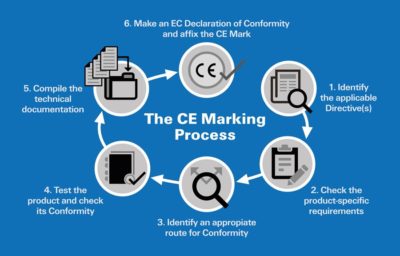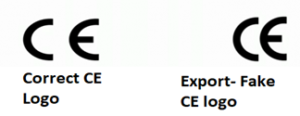CE Marking
What is CE Marking?
“CE” is the abbreviation of “conformité européenne” (French for “European conformity”).
You must have noticed CE written on a wide range of products when you buy them, for example: new phone, TV, Toys etc. This CE mark is a declaration that the product meets all the legal requirements for CE marking and can be sold through the EEA (European Economic Area).
It is not a quality indicator or a certification mark. The CE marking is required for goods sold in the European Economic Area (EEA), but is also found on products sold elsewhere that have been manufactured to EEA standards.
What is EU?
European Union (EU) is a union of about 27 countries. These countries operate a single market where free movement of goods capital services and people is allowed between member states.
The EEA includes EU countries and also Iceland, Liechtenstein and Norway. It allows them to be part of the EEA single market.
Benefits of CE marking
- Helps the business houses to know that the product that has CE mark can be traded in the EEA without restriction thus allowing businesses’ smooth sailing.
- A uniform level of criteria, related to safety, health and environmental protection is been set through CE mark for all the consumers throughout the entire EEA.
How to apply for CE Mark?
The procedure for getting CE mark is simple yet systematic where a series of steps are to be followed.

STEP 1: Identify applicable directive(s) and standards
The good thing is that not all products require CE marking. Only products that fall under one or more of the European product directives are subject to CE marking rules. Therefore, the first step would be to identify different directives and standards that may apply to the product.
STEP 2: Check the essential requirements for your product
It is clearly stated in the directives what conditions should be fulfilled for the product to be compliant. It is then the responsibility of the manufacturer to ensure that the product match the requirements.
STEP 3: Check if your product needs a third-party conformity assessment
All the products need not be assessed by a third party. It can independently be done by the manufacturer. But Some directives require that an authorised third party, known as a notified body, tests and certifies the product in order to ensure conformity with the requirements. Therefore the next step would be to ensure if the product requires a third- party conformity or it can be done by the manufacturer himself/herself.
STEP 4: Test the product and check its conformity
If the product does not require to involve a notified body, the manufacturer must rely on his own resources to assess product’s conformity.
STEP 5: Create and maintain technical documentation
All CE marking directives require manufacturers to create and maintain technical documentation that shows the product’s conformity to the requirements of the applicable directive. The manufacturer should be able to produce the documents when asked for.
STEP 6: Sign the EU Declaration of Conformity and affix the CE mark
The final steps in the CE marking process include affixing the mark to your product and signing a Declaration of Conformity. The declaration acknowledges that the manufacturer is solely responsible for the compliance of their product with all applicable CE marking directives. Only after the mark is properly affixed,the product will be ready for the market.
Where to Apply CE Mark on your Product?
The CE marking must be visible, legible and permanent. If for any reason the CE marking cannot be applied on the product, in that case, it can be affixed to the packaging or on any accompanying documents.
How to Identify Real or Fake CE Logo?
One can easily make out the difference between real or fake CE logo by paying little attention to the spacing of the alphabets C and E.
- There is a space between C and E.
- The C and E are formed from two consecutive circles.
- both letters should have the same vertical dimension and be no smaller than 5mm (unless specified differently in the relevant product requirements).
- Whereas the fake logo has very little space.

